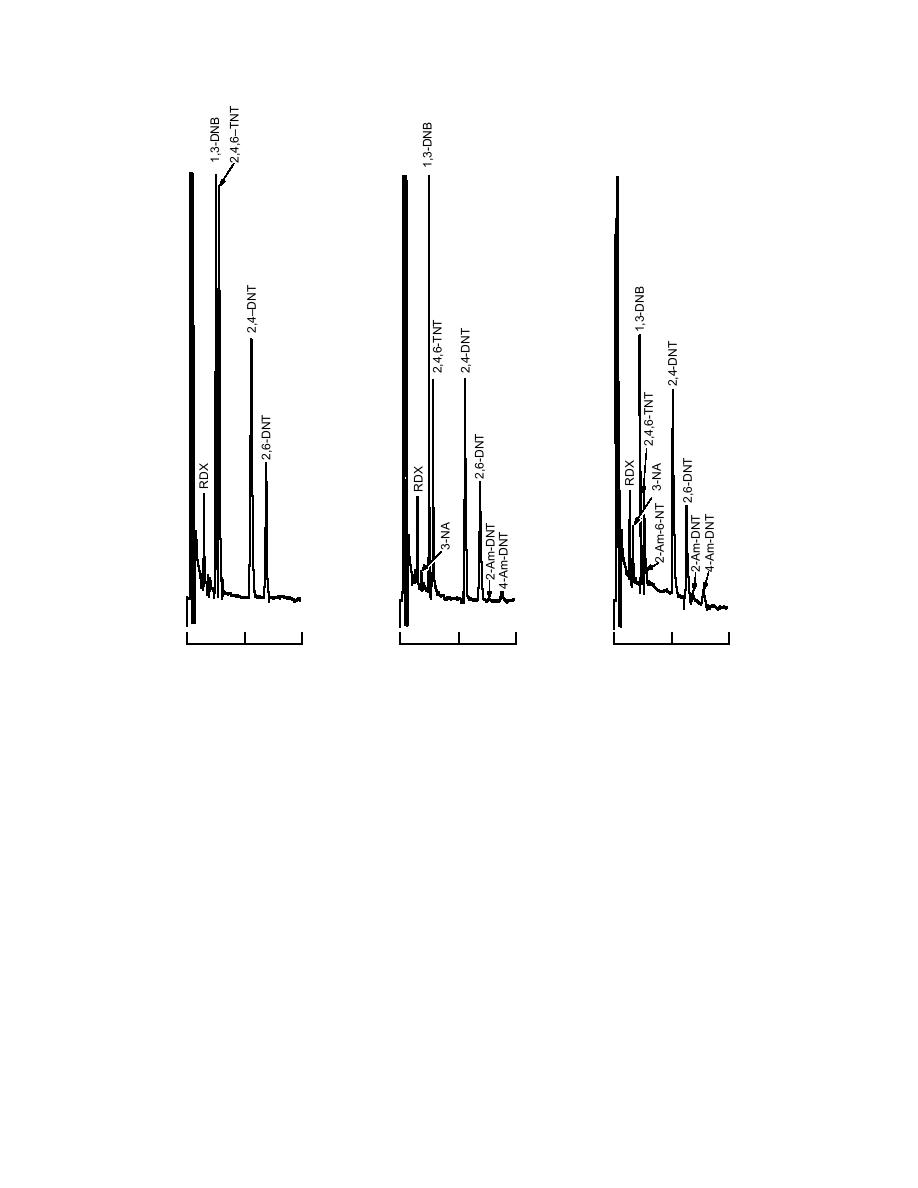
Day 0
Day 7
Day 1
0
10
20
0
10
20
0
10
20
Time (min)
Time (min)
Time (min)
Figure 1. Chromatograms of incubation study samples at room temperature (22 2C)
for Fort Leonard Wood soil.
reduced for all target analytes. Here again, though, the
concentration of TNT drops very rapidly over the first
concentrations of TNT and DNB decreased much more
24 hours, then continues to drop, although less rapidly,
rapidly than those of 2,4- and 2,6-DNT. At 4C, the
thereafter. After 20 days, the concentration of TNT is
concentrations of TNT and DNB dropped by 54 and
only one-fifth of the original concentration. The con-
33%, respectively, in 30 days, while the concentrations
centration of 2,4-DNT also drops in the first 24 hours,
of both 2,4- and 2,6-DNT dropped by only 20% in the
but to a much lesser extent than TNT (Fig. 3). It, too,
same time period. The monoamino transformation prod-
continues to drop over time, but at the 20-day mark,
ucts of all four nitroaromatics were detectable in the
the concentration of 2,4-DNT is still 60% of the initial
4C samples after day 7, again emphasizing that the
value. The two DNTs are also transforming to their
loss of these compounds was attributable to transfor-
corresponding reduction products (2-Am-4NT, 4-Am-
mation, not irreversible sorption.
2NT, and 2-Am-6NT) as demonstrated by the observa-
At 4C, the four key components were shown to
tion of these three compounds in the room temperature
be even more stable, with concentrations declining by
chromatograms after 9 days.
only about 10% in the 30-day period for all four com-
The general pattern seen for the samples stored at
4C was similar (Table 3b) to that observed for the 22C
ponents (Table 3c).
To investigate the rate of loss and estimate the half-
samples, except that the rate of reduction was much
6



 Previous Page
Previous Page
